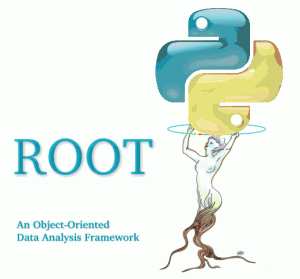 When you’re writing a Python program to loop over a large number of events, for instance those stored in a large ROOT TChain object [1], you may find that the standard bit of help on the web is not sufficient:
When you’re writing a Python program to loop over a large number of events, for instance those stored in a large ROOT TChain object [1], you may find that the standard bit of help on the web is not sufficient:
TChain aChain("NameOfTTree")
aChain.Add("/a/bunch/of/files/*.root")
for anEvent in range(aChain.GetEntries()):
# Do a bunch of stuff with an event in a TTree
If there are too many events for the Python range() function – that is, if the integer returned by the TChain::GetEntries() method is too big for Python – you’ll get an error. Now how are you going to run over these events?
One way to handle this is to use the xrange() function instead of range(); it can handle a much larger integer and generate a much larger list of integer events:
TChain aChain("NameOfTTree")
aChain.Add("/a/bunch/of/files/*.root")
for anEvent in xrange(aChain.GetEntries()):
# Do a bunch of stuff with an event in a TTree
